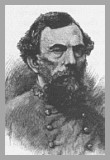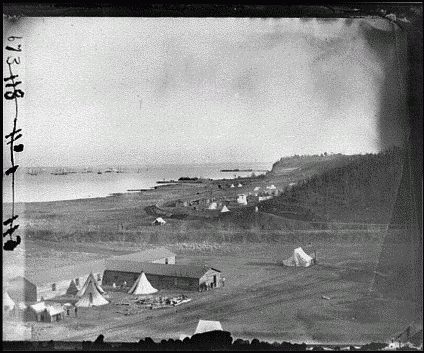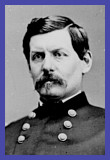Theophilus H Holmes courtesy General Officers of the Civil War In October, the 35th Georgia was ordered to Evansport, Virginia, where it was placed under the command of Major General Theophilus Hunter Holmes. Along with the 22nd North Carolina, 2nd Tennessee, 47th Virginia, Fredericksburg Artillery, Maryland Flying Artillery, Caroline Light Dragoons and Stafford Rangers, these units made up Brigadier General Samuel Gibbs French's brigade. Here the regiment went into camp, and guarded the batteries of heavy guns established to blockade the Potomac River and Chesapeake Bay below Washington. Occasionally harassed by Union ships out of Chesapeake Bay firing into their position, life in the Aquia District was mostly tedious for the regiment, and the men spent their time drilling and on picket duty. On November 1st, the Union Army placed artillery across the Potomac, and began to bombard the Confederate forces. Later that month, the Campbell County Ranger's (now Company C of the 35th Georgia) would loose their first man, killed in battle (presumably by Union artillery). Private Zebulon L Howard died November 27th, 1861. On December 30th, French complained to Richmond the 250 privates of the 35th Georgia, the 471 privates of the 22nd North Carolina and 42 privates from the Arkansas Battalion were the only troops he had to guard the batteries.
In
March of 62, the entire brigade presented itself in parade to General Joseph
Eggleston Johnston, then commander of the Confederate Army in the East.
Impressed, Johnston awarded the 35th Georgia new uniform's as the best drilled
regiment on general review.
courtesy General Officers of the Civil War The war had been fairly quiet in the East during the prior month's. After being embarrassed at Bull Run (Manassas) in July of 1861, Lincoln had replaced Gen Irwin McDowell with General George Brinton McClellan, who was now in command the Union Army of the Potomac. McClellan had spent most of the winter building his new Army. But in March, he made his move. Landing his forces at Newport, Virginia, his army quickly moved up the peninsula. The 35th was put in a new brigade under the command of newly appointed Brig General James Johnston Pettigrew. The brigade would include Pettigrew's own 22nd North Carolinian's, the 47th Virginia, the 2nd Arkansas Battalion, the 35th Georgia, and Andrews 1st Maryland Artillery. Falling back, General Johnston massed his troops east of Richmond, placing his army between Richmond and McClellan's Army. Within two months of landing on Virginia soil, McClellan's forces looked down on the heights upon the capital of the Confederacy. Instead of taking advantage of the situation, McClellan halted his forward movement, and for weeks the two armies stared at one another. |



